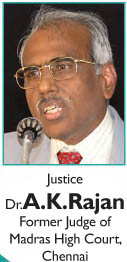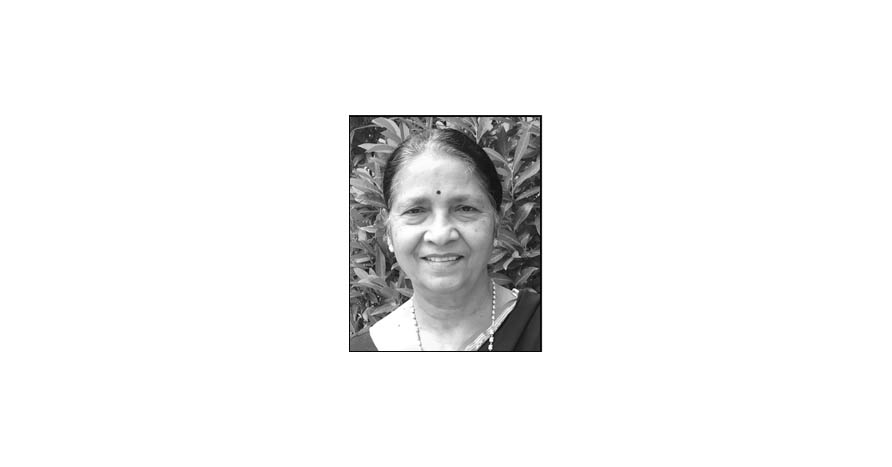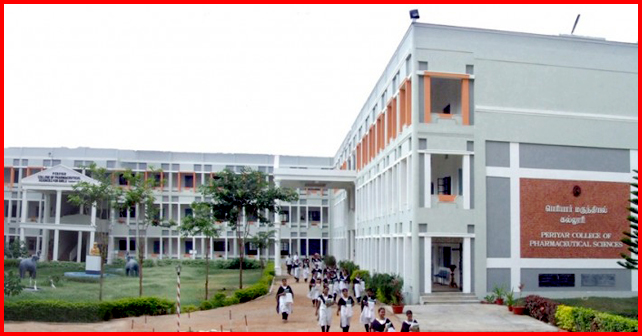 Meaning of Social Justice:
Meaning of Social Justice:
The modern concept of ‘social justice’ may be traced from Thomas Paine, (1737 -1809) one of the architects of USA, born in England and lived mostly in France. In his book titled ‘Rights of Man’ published in 1791, he states that ‘Whatever is my right as a man is also the right of another: and it becomes my duty to guarantee as well as to posses’. He further states, that for any country to claim that its poor are happy, ‘neither ignorance nor distress is to be found among them’. In India we had Narayana Guru (1826-1928); Jyothi Rao Phule (1827-1890); Periyar E.V.Ramasamy (1879-1973); Dr.Ambedkar (1891-1956). There were many more, like Pitty Thyagarayar, Dr. T.M. Nair, Dr. C. Natesan, the three who started the Justice Party and sphereheaded social justice in Madras Province, Sahu Maharaj, Mysore Maharaja, Panagal Raja, Raja of Bobbili and many more great men and their followers. Without remembering their contributions, the study of ‘social justice’ in India, will not be complete. But very often all these leaders are forgotten by the historians and other writers. Seeing the plight of the people of oppressed classes those great men, each tried in their own way, to improve the standard of living of the oppressed, by persuasion and appealing to reasons. The present day advancement of the oppressed classes of society in India is only the outcome of those great men’s work. The proof is that the oppressed classes and OBC are well advanced only in the Southern States of Tamil Nadu, Kerala , Karnataka and Andhra compared to the northern States.
During the British Regime:
In fact, the condition of people in this part of India was noticed by the officers of the East India Company as early as 1840. They had realised the social inequality prevailed then and therefore attempted to provide their standard of living by attempting to have communal representation in the Company’s employment as early as 1840. The company, for that purpose, issued a Board Standing Order No.125. In 1844 , Railways also issued a similar order. But they could not be implemented immediately. Only in 1927, after the Justice Party came to power in Madras Province such implementation became a reality. The Government of India Act 1935, in Section 52 (1) enjoined the Governor General and the Governors to take appropriate action to safeguard the interest of the ‘minorities’. But, the backward classes among the Non- Brahmins got reservation only in 1947, when O. Ramasamy Reddiar became the Chief Minister of Madras. That order was known as ‘Communal G.O’.
Reservation under the Constitution:
Within a few years, the Constitution came into force. Though, in the then largest Madras Province, reservations were implemented from 1927, both in the Educational Institutions and in Government Employment, in the Constitution, safeguards were made only for the employment in Article 16(4). In the same article the reservation in the field of education could also have been safeguarded. This lacuna was used to challenge the Communal G.O. as unconstitutional, before the Madras High Court, in Champakam Durairajan case. The Madras High Court held the G.O. unconstitutional as the reservations were made only on the ground of castes and that was a violation of the Provisions of Article 15(1). The Supreme Court also confirmed the decision.
Amendment to Constitution:
Consequent to the upsurge in Madras Province, the Constitution was amended by the same members who were in the Constitutional Assembly; Sub clause (4) was added in Article 15. It reads that ‘nothing in this article shall prevent the State from making any special provision for the advancement of ‘socially and educationally backward classes’ of citizens’. Instead of adding a new sub clause to Article 15, Article 16 itself could have been amended including the words ‘and admission to educational institutions’ at appropriate places that would have saved the backward classes from the continuous and unending legal battle, waged by some vested interests. The words ‘Socially and Educationally Backward classes’ [SEBC] has proved to be a paradise for the legal fraternity.
Meaning of SEBC:
Though the words ‘socially and educationally backward classes’ was introduced in the year 1951, the exact meaning of the phrase was not clear. Hence Central Government appointed Kaka Kalelkar Committee and it gave a report that it is based only on ‘castes’.
But the Chairman sent a separate note stating that though he had signed the report he did not stand by it. The Government therefore did not accept that view. The next Committee was only the Mandal Commission. In between there were many committees appointed by the various States.
Courts’ views:
The Supreme Court in Balaji’s though approved ‘caste’ as the basis for determining SEBC, stated that caste need not be the only basis for such decision. Thereafter when the Government determined on the basis of occupation, caste not being one of the criterion, in Chitraleka’s case said, caste should also have been taken into consideration. Many methods were adopted by the States. It was finally settled after more than 35 years, by the Supreme Court in K.C. Vasanth Kumar Vs State of Karnataka. In that case Chief Justice E.S.Venkatramaiah, and two other judges, including, Justice Chinnappa Reddy held that SEBC in Art. 15 (4) and Backward Classes in Art.16 mean one and the same. Further it was held that there was no impediment for making a sub- classification, as ‘most- backward’ within the Backward classes.
Qualitative and Quantitative:
In the matter of Southern Railway Vs Rangachari, the Supreme Court held that the word ‘not adequately represented’ in Article 16 cannot be given a restrictive interpretation. Adequate representation is not only in numbers but also in the nature of posts. The adequacy should be not only in quantity but also in quality. Therefore reservation to backward class can also be made in higher posts. That is the representation should be at all levels.
Reservation cannot exceed 50 percent:
With respect to quantum of reservation, the Supreme Court held in Balaji Vs State of Mysore, when the State of Mysore made reservation of 68 per cent only a minority number of seats can be reserved (that was understood as 50 per cent). Further it held that Caste cannot be the sole basis of classification, though on facts, the caste as the sole basis for classification was upheld. It was also held that there cannot be sub-classification within the classification as ‘more backward’.
Income Test:
One of the Committees appointed, by the Government of Tamil Nadu for suggesting ways and means for better implementation of the system of reservation, in its opinion had stated that within the communities considered as backward classes, advanced section of persons should be excluded for better results. A few years latter State of Kerala passed an order that in Elava community, (a backward class), if the family’s gross annual income exceeds Rs.12,000/-, then the members of that family would not be eligible to get the benefits available for the backward community. This order was challenged in K.S. Jayashree Vs State of Kerala. The Supreme Court held that the order was valid. That was followed immediately by Tamil Nadu Government in the year 1978. An order was passed that if a family, whose annual income exceeds Rs. 9000/-, even if the community or caste was included in the list of Backward Classes, the members of that family will not be considered as backward and they will not be eligible to get the benefits conferred on the backward classes. This order when challenged before a Full Bench of Madras High Court, three judges heard the case, and by a majority decision held the G.O. was valid. But in the ensued general election the ruling party lost the election very badly; the people rejected the party. Immediately that G.O. was withdrawn. Further, the reservation for Backward Classes was increased from 31 per cent to 50 per cent to the surprise of all sections, increasing the total reservation from 49 per cent to 68 per cent and then to 69 per cent by providing reservation of exclusive per cent for the Scheduled Tribes.
OBC Reservation in Central Government
Till 1990 reservation for Backward Classes were not made by the Union Government, either in Central Services or in the Educational Institutions run by it, though such reservations were made for Scheduled Castes and Scheduled Tribes, from early 1950. Even though Mandal Commission report was given in1980 itself, only when V. P. Singh became the Prime Minister an order was passed reserving 27 per cent of posts in Central Government services for the Backward Classes. Even then no seat in the educational institutions run by the Central Government was reserved. The reason for fixing 27 per cent was that already 15 per cent was reserved for Scheduled Castes, and 7.5 per cent was reserved for Scheduled Tribes. Only 27.5 per cent alone were available to ensure the total reservation did not exceed 50 per cent. In 1991, the Central Government headed by P.V. Narasimha Rao issued another order modifying the 1990 order, where 10 per cent were reserved only on the basis of income, irrespective of community.
The Creamy Layer :
This was challenged by a practicing lawyer Indira Sawhni, by way of a Public Interest Litigation. A NINE judge bench went into various aspects of reservation. The Supreme Court reiterated all the principles laid down till then, including that reservation cannot be made only on the basis of income, and hence the 10 per cent reservation was held unconstitutional. But, in one issue, which has far reaching consequences, it changed the view held till then. The Supreme Court held that though caste can be the basis for classification, the advanced section of the caste, the ‘Creamy Layer’ in the caste, should be excluded or removed, and they cannot be given the benefit of reservation. Parameters to fix the creamy layer have to be determined by the Government. Accordingly Government issued the parameters. The sons and daughters of the persons, who are holding a Constitutional post, like President of India , Governor, Judges of Supreme Court and the High Courts; I.A.S. and I.P.S Officers; Class I Officers; if both the parents are Class II officers; finally wealth test or income limit was also specified. In case of families getting a gross income of more than one lakh, per year, the members of the family become creamy layer and they cannot be considered as part of backward classes. The income limit needs to be revised once in 3 years. Few persons realised that the effect of the judgment would result in nullifying the advantages earned, by sustained efforts of many organisations and movements, over a period of ninety years, (from 1915 onwards), and it was nullified without the beneficiaries knowing that it was being nullified.
Reservation in Central educational institution:
Only in the year 2006 Central Government wanted to reserve 27 per cent seats in the Institutions run by it. Instead of doing it by way of an executive order as was the case done till then, the Government introduced a Bill in the Parliament. The procedure adopted was unnecessary, probably it was deliberate. There was never any opposition for the reservation of SCs and STs. But for the reservation of OBCs there was very big opposition. Doctors and students of Medical College, Delhi started the agitation, which took momentum in an unprecedented manner. A case was filed at the Bill Stage itself, even before the Bill was taken up for discussion. A two judge bench took it on file, referred it to a larger Bench after determining the points to be determined, which is normally not done while referring a matter to larger Bench. Thereafter the FIVE Judge bench held that SEBC means the backward class minus the Creamy Layer in the caste / community. Not excluding the creamy layer from the community, would make the reservation unconstitutional.
Income Limit for Creamy Layer:
Following the judgment, the Central Government issued an order in 1993. According to that Order, the sons and daughters of persons who is holding the post of, the President of India , Governor of any State, Judge of the Supreme Court or the High Court; I.A.S. and I.P.S. officers; Class I officers; Class II officers if both the parents are in that grade; and in case economic criteria, possession of certain extent of land or house, or if the person’s family annual income exceeds Rs. one Lakh, were to be considered as forming the Creamy Layer. They are to be excluded only the remaining members of the community alone would be eligible for the benefit of reservation. That is even if a person, who is not a son or daughter of the high dignitaries and officials mentioned above, in case the gross income of the family exceeds a certain limit the members of that family will become creamy layer. That is, income is the sole basis for elimination or determination as creamy layer. It is very difficult to accept the proposition that while economic criteria (income of the family) cannot be the sole basis for determination of backward classes, how the same economic criteria or income can be the sole basis, for determination and elimination as creamy layer? Such reasoning, to put it mildly, borders illogical conclusion.
Income Limit Only For Exclusion as Creamy Layer:
The Government also stated that the income limit must be revised once in three years. But after 1993, there was no revision for almost seven years. When the Government of Kerala Government after some years, increased the limit, from one lakh to 3 lakhs, the Supreme Court in 2007, quashed that increased limit as excessive. Again when it was increased by Central Government to Rs. 4.5 lakhs, in 2008 one Prof. Indresan challenged it as not permissible. All these challenges were made under the guise of Public Interest Litigation, by unconcerned persons who are not in any way connected with the issue or affected in any manner. If really the members of the backward classes were affected by the so called creamy layer of that community, they would have come before the court for redresses. That was not the case. Only people unconnected with and unaffected by the system approached the courts.
OBC’s 27 per cent – can never be filled:
The result of such exclusion of creamy layer was that in 2008, out of the 8652, eligible OBC candidates just 1134 (13.1 per cent) were short listed in I.I.Ts. When the annual fee for IIMs and other such institutions ranges around 4.5 lakhs per year, it would be beyond the reach for any non creamy layer student. Certain amount of affluence is a sine qua non for aiming for admission into such institutions. The result would be that any ‘special arrangement’ made to benefit the OBCs, would become futile. When 27 per cent seats were reserved in the Educational institutions run by the Central Government, due to the trouble created by vested interests, seats were increased in order to maintain the number of non backward students. But, most of those increased seats created for making reservation for the OBCs, were also garnered by the advanced classes on the ground that the facilities created by the institutions should not go waste. At the same time the plea that the unfilled seats, reserved for OBCs, can be filled up by the candidates from the creamy layer of the OBCs was also rejected by the Supreme Court. Under the circumstances, there cannot be any doubt that as long as the concept of creamy layer continues to be insisted and followed, the 27 per cent reservation for the OBCs, either in the Central Government employment or in the educational institutions run by the Central Government could never be filled up. According to the Annual Report of DoPT (2014-15) as on 1.1.2013 in group ‘A’ Posts out of 74,866 only 8,316 are OBCs (11.11 per cent for 27 per cent)10,434 are S.C. (13.94 per cent for 15 per cent), 12,073 are S.T. (6.4 per cent for 7.5 per cent). Any number of Special Recruitment may not help filling the entire 27 per cent either in the employment or in the educational institutions. The reason is very obvious. Most of the eligible persons from OBCs would be, in fact are being, excluded in the name of Creamy Layer.
No Creamy Layer in Open competition or for SCs & STs
It has to be remembered that certain amount of affluence is necessary for competing for higher level posts / seats. When the Supreme Court ruled that the ‘ Creamy Layer’ principle should be extended to SC / ST s as well, the UPA Government decided that implementing that decision was politically unacceptable and ‘measures to undo the ruling had to be devised’. The underlying principle for all these arguments appears to be implementation of ‘equality in fact’. That is economically disadvantaged were given preference. In that case the principle shall be applied even to the open competition candidates, by which financially disadvantaged group shall be given preference in order to maintain equality in that group. But this will never happen. From this it can be seen, that the OBCs are the targeted group, for some reason. Unless that is realised and addressed properly, by all concerned the situation will continue. When the principle of Creamy Layer is not applicable to the Open Competition and to S.C & S.T. it is difficult to accept that it is legal to apply only for SEBC. Probably the vested interests want to keep the SEBC outside in order to protect their interests.
To Ensure 27 per cent OBC Representation:
Certain important steps are the immediate necessity in order to ensure the 27 per cent reservation and for the protection of the rights of OBCs.
• The words ‘socially and educationally backward classes’ in Art.15(4) and ‘backward classes ‘in Art.16(4) of the Constitution shall be substituted by the words ‘ Backward castes .’
Constitution should be amended to remove the ‘creamy layer’ syndrome.
• The National Commission for Backward Classes should be empowered with statutory powers similar to that conferred on the National Commissions for S.Cs. and S.Ts. under Art.338.
• Reservation of certain minimum number of seats both in Parliament and in the State Legislatures should be made.
• Provisions, for reservation of seats both in the Municipalities and Panchayats for the OBCs must be effectively utilised.
• A ‘watching committee’ should be constituted with necessary powers.
• Reservation should be made for OBCs in Private Sectors also.
Conclusion:
Repeatedly courts are approached to defeat the attempts and steps taken to improve the OBC representation in employment as well as in educational institutions. Governments become sensitive whenever Courts want to impose restrictions on reservation for S.Cs and S.Ts. But the same Government remains oblivion if it is for OBC. That may probably be due to the fact that S.Cs and STs have a substantial representation in Parliament and in State Legislatures. The same sensitivity is not to be seen when the OBCs are affected. This can be altered only by having reservation of seats for OBCs in Parliament and other lawmaking bodies such as State Legislatures, Municipalities and Village Panchayats. Privatisation takes away the employment opportunities to the under privileged people of the society. That may be due to the misconception that Article 15(4) does not empower the Governments. to regulate the private sectors. In fact, using Article 15(4) reservation can be made even in employments in Private companies. The words, ‘making any special provision’ in Art. 15(4) are wide-enough to cover many more aspects. In future also, the reservation for OBCs will be repeatedly challenged before the Courts under some pretext or other. The OBCs must be vigilant and rise to the occasion.
Text of the speach at Nationla Seminar on
Social Justice and Empowermrnt of OBCs.
on December 11 – 12, 2015 at Kumarakom, Kerala






